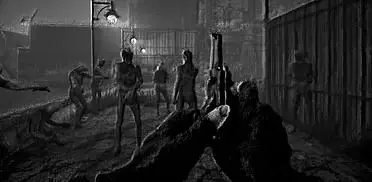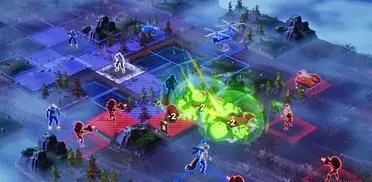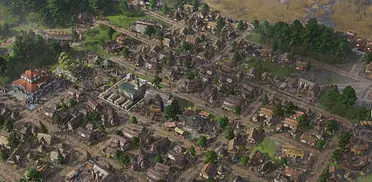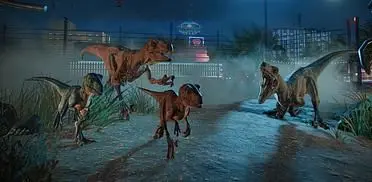Star Wars Outlaws is the exact type of video game that would’ve been the biggest release of the year like a decade ago. A truly open-world Star Wars title has been a dream for as long as I can remember, and while some may argue the latest Lego Star Wars or last year’s Star Wars Jedi: Survivor already delivered some of that, Ubisoft Massive’s journey into the galaxy’s darker (but not Force-sensitive) side is the first AAA release that actually feels like a traditional action-adventure sandbox.
Massive Entertainment already proved last year with Avatar: Frontiers of Pandora that it could perfectly deliver a crowd-pleasing AAA open-world experience based on a large IP, so working with the much richer Star Wars universe seemed like a guaranteed win unless something strange happened. By and large, Star Wars Outlaws is a success that will surely spawn more open-world Star Wars games (if not a direct sequel), but how much does it try to break the mold?
Looking at the marketing materials and previews, you can get a pretty solid idea of what to expect from Outlaws and its take on the tried-and-tested Ubisoft open-world formula, but there are some positive surprises. For starters, there’s no ‘level gating’ whatsoever, which still plagued the standard Frontiers of Pandora experience. While tools and abilities – unlocked by interacting with the world and its characters – can (and will) make your jaunts easier, there are no areas or outposts where you get ‘one-shotted’ because your pants aren’t level 20 or whatever.
This decision impacts the flow of the overall game, whether you’re focusing on the main storyline or taking your time with all the secondary content available; it’s much brisker than Ubisoft’s other full-price open-world releases in recent years. It feels more like ‘Red Dead Redemption 2 but Star Wars’ than a grindy open-world. Sure, Outlaws’ open maps are sizable and filled to the brim with activities and little corners to explore, but it smartly avoids crossing the ‘bloated’ line that’s been criticized heavily as of late. A bit surprising, however, is that Kijimi (first seen in The Rise of Skywalker) and Cantonica are strictly limited to city streets and other ‘closed’ separate areas; only Akiva, Toshara, and Tatooine are wide in scope, making the game not as a huge as it may seem at first.
This ties into the actual length of Outlaws’ main story. In many recent Assassin’s Creed games, even focusing on the central experience resulted in 40 to 50 hours of playtime at least. Avatar: Frontiers of Pandora brought that number down to something closer to 20 hours, and in my experience, you can roll credits on Outlaws in around 15 hours easily even with some secondary content thrown in. However, it’s highly recommended that you spend more time engaging with its detailed representation of the Star Wars galaxy either during or after the main story (yes, there’s an unrestricted post-game), since some of the best missions and scoundrel-y moments come from working on smaller contracts and requests off the main path.
As for the actual main narrative, Kay Vess – born and raised in Cantonica’s ‘casino city’ of Canto Bight – perhaps takes too long to be fully compelling as our lead, but later missions and a fantastic final stretch manage to end her journey on a high note. Much more thoroughly entertaining are the other crew members and many secondary criminals we come across, with the reprogrammed commando droid ND-5 bound to become a fan-favourite Star Wars robot as soon as the game launches.
On the matter of ‘fan service’ and tying the story into the larger Star Wars mythos, there were a couple of moments that bothered me, as I strongly wanted Outlaws to fully stand on its own, away from the larger politics and drama of the galaxy. Regardless, it shows constraint for the most part, with almost every cameo feeling natural for the story being told and the murky waters that Kay must navigate alongside ND-5 and cute little Nix.
The depiction of Star Wars’ colourful and dangerous underworld is what ends up elevating the game. From bustling city streets to noisy cantinas, it feels like the first act of A New Hope and Return of the Jedi or the entirety of Solo: A Star Wars Story coming to interactive life. Its biggest defining trait – and perhaps it could’ve used some more of those – comes from the reputation/crime syndicate system. Outlaws isn’t an RPG, but choices abound when it comes to figuring out who you want to please (or betray), and the constant tug-of-war between the Pykes, Crimson Dawn, the Hutts, and the Ashiga Clan – with Kay trying to survive in the middle – adds a degree of genuine unpredictability and change to each world you visit. Plus, you’re getting really nice equipment pieces and other rewards if you side with one group long enough.
As teased before, combat only becomes as complex (but easier) as you want it to be. A handful of upgrades to Kay’s abilities and her vehicles – the Trailblazer ship and a nifty speeder bike – come as obligatory with the main story, but she’s on her own otherwise to learn about and find masters that can teach her how to become a better criminal. It’s here that Outlaws reminds you again it’s putting interactions over mindless grind and XP bars, and that extends to every NPC encounter or treasure hunt, the latter of which reminded me of the recent Tomb Raider trilogy’s approach to secret areas.
There’s also much of Lara Croft’s nimbleness and frailty in Kay Vess as a playable character. Sure, she’s a fantastic shot – ‘dead eye’ skill included – with a bag full of tricks and tools, but every gunfight that spirals out of control feels truly threatening, encouraging a stealthier approach when possible. In fact, some of Outlaws’ biggest standout moments often come from just sneaking through an Imperial base and coming out undetected (stealth feels much more demanding here than in recent Assassin’s Creed games, for example).
On the other hand, starship battles and space exploration, which happen in constrained maps set in each world’s orbit, clearly didn’t get as much attention as everything else, or maybe the team simply considered a strictly arcade-like approach to them was better to avoid scaring off potential players. There’s nothing egregious about this side of the game, but it’s the part that feels the most underbaked, and unless you’re looking to really complete the entire thing, chances are you won’t actively engage with it much beyond the main story.
Last but not least, the audiovisual presentation is unsurprisingly top-notch. Like most Star Wars games, Outlaws sounds fantastic (with Wilbert Roget II’s soundtrack deftly establishing memorable themes as soon as the game starts), and it also looks every bit as gorgeous as Avatar: Frontiers of Pandora did last year, or perhaps even better. On PC, I found the performance to be as solid as in Massive’s previous game, landing in the 120-140 FPS range on average – with lows on the 80s – with Ultra settings at 1440p on a 4070Ti and 7800X3D build. It must be noted that DLSS set to Quality and Nvidia’s frame generation solution were used, and I used the 21:9 cinematic display mode to elevate the vintage vibes (it also performs slightly better this way in my experience).
Not as good is Nvidia’s RTX Direct Illumination, which is the extra that took like 30 to 40 FPS away from me and introduced heavy stuttering and crashes. Sure, this option seemed to add too much load to my 4070Ti and its 12 GB of VRAM, but even with a stronger GPU, the added visual flourish – which makes the overall image visibly fuzzier – isn’t worth the performance hit (and that’s while being helped by the FG solution).
STAR WARS OUTLAWS VERDICT
Star Wars Outlaws fully commits to realizing the open-world scoundrel experience many fans had been dreaming of and walks away unscathed, which is no small feat and reinforces the idea that Massive Entertainment is one of Ubisoft’s best studios at the moment. However, it needed an extra push and bolder swings to leave a big mark on the genre.
TOP GAME MOMENT
Going in and out of a heavily fortified Imperial base completely undetected.
Good vs Bad
- The most detailed depiction of the Star Wars galaxy in a video game yet
- Lucasfilm-level of special attention to the audiovisual presentation
- Plenty of content and opportunities in its open world without feeling bloated
- Despite a slow start, the main story is brisk and ends strong
- Colourful, unexpected, and well-defined cast of characters
- No level gating nor tacked-on, bland RPG elements
- The reputation system adds flavour and unpredictability to the worlds you visit
- Starship battles aren’t annoying but feel like an afterthought
- Kay Vess isn’t as compelling as the secondary characters for most of the game
- It’s missing some truly standout, memorable set pieces











